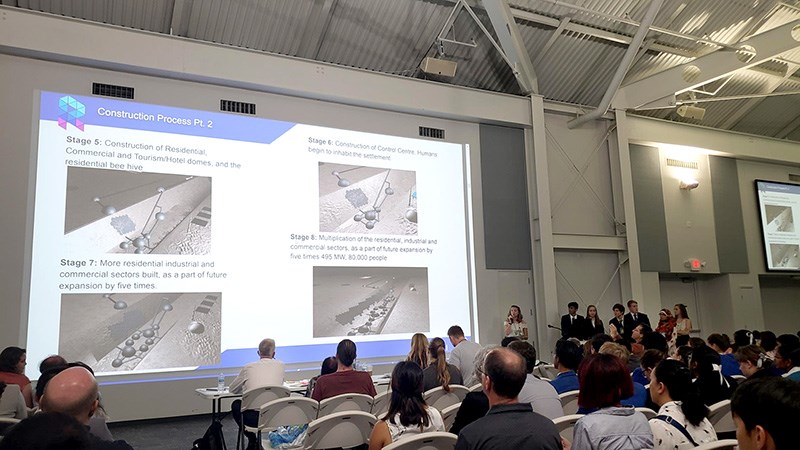Fifty years ago, astronauts Neil Armstrong and Buzz Aldrin walked on the moon. Last month a Coquitlam high school student helped colonize it.
Owen Coukell, who’s going into Grade 12 at Dr. Charles Best secondary in September, was part of a team of students who won an international competition at the Kennedy Space Centre in Florida to design a home for 17,200 people in a rille — or trench — on the moon.
The Space Settlement Design Competition has its roots in 1984, as an offshoot of the Boy Scouts of America’s annual national exploring conference. It became an international event 20 years later, when a semifinal competition was held in Delhi, India, and subsequently expanded around the world with regional competitions in Latin America, Eastern Europe, the U.K. and Western Europe as well.
Coukell said his involvement happened quite by accident.
A buddy suggested Coukell check out a regional competition held last May at the University of British Columbia. He said he expected “some sort of fun little camp activities,” but before he knew it he was deeply immersed in a full-on two-day engineering exercise in which he was enlisted as the head of his team’s structure department, which managed the design and construction of a space station to house 1,000 people to collect space debris.
Coukell, who has an interest in architecture and mechanical engineering, just not necessarily in the space realm, said it was a challenge leading a diverse team of Grade 9 to 12 students with varying skills and capabilities to keep them on task towards their goal.
“I met them, and suddenly I’m in charge,” he said, adding, “You fake it ’til you make it.”
In fact, Coukell’s team didn’t just make it, they won and qualified to head to Florida for the international competition as the first representative ever from Canada.
Coukell said working alongside and competing against hundreds of students from around the world as well as rubbing shoulders with actual space engineers and scientists in the education centre at Kennedy was a heady experience.
“The opportunity to go to NASA inspired me to show we had what it took,” Coukell said.
With five days to work on their moon settlement project, Coukell said there were a number of hurdles to overcome in order to create a hospitable environment in which people could live and work, including minimal gravity and an abundance of moon dust.
“Calculating how much gravity you need is something I have not learned in high school,” Coukell said.
While the settlement teams design exists only in plans, specification sheets and conceptual drawings, Coukell said aerospace representatives from the National Space Society and NASA were on hand to observe, provide guidance and act as judges. Projects were scored on their originality, thoroughness and the quality of the team’s 30-minute presentation.
Coukell said they had to be careful not to overlook details people might otherwise take for granted, like providing a source for oxygen at the moon settlement.
The medals they were presented with after their victory commemorated the 50th anniversary of the moon landing. Coukell said it brought home how far technology has advanced in that time.
“They didn’t have Google articles to tell them about what had worked,” he said of the pioneering Apollo moon missions. “We thought our challenges were difficult. They had to work from scratch.”



